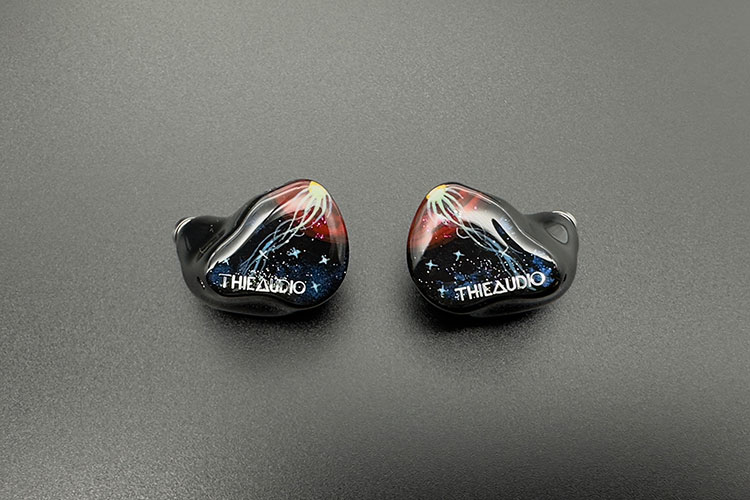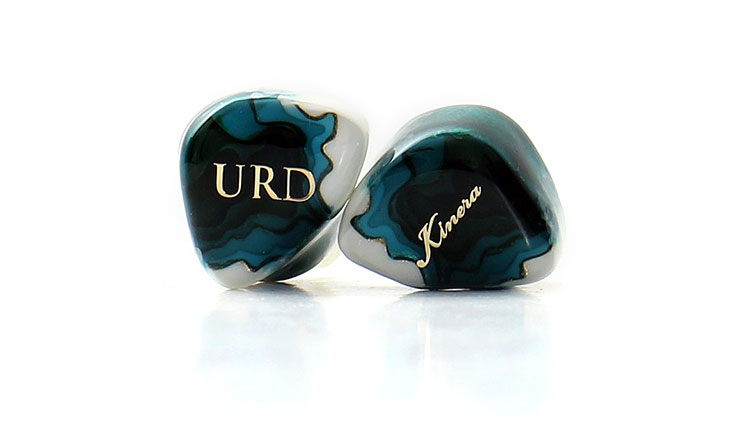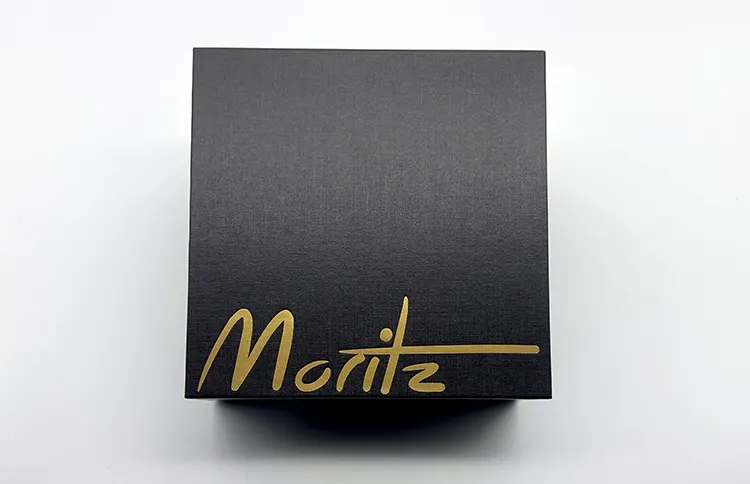Synergy
Efficiency
The Moritz Audio Paradise boasts an impedance of 7Ω and a sensitivity rating of 100 dB/Vrms. While it can be driven by lower-rated sources like dongles and smartphones, I highly recommend using more powerful sources for optimal performance.
The IEM is quite power-hungry and can scale remarkably well, making it one of the most demanding IEMs I’ve encountered recently.
When paired with a robust power source, the sound becomes significantly more spacious and richer in tonality. Conversely, with weaker sources, the Paradise can sound thin, and the bass may lack impact.
Source Pairings
To truly unlock the potential of Paradise, it’s essential to choose a suitable source that meets its power requirements. The Lotoo PAW Gold Touch, with its decent amplifier stage, provides an excellent pairing. I typically listen at around volume level 45 with this combination.
I find the Astell&Kern SP3000 inadequate due to its relatively weak amplifier section, resulting in a tonal quality that feels less rich and full, with a lack of dynamic range.
The LPGT, however, offers a nice synergy, delivering full-bodied bass with good texture and layering, alongside impressive soundstage depth and overall richness.
When paired with the Questyle CMA18P, featuring the AKM 4493 DAC chipset and ample power output, the performance is quite decent. This setup drives the IEM with ease, though it doesn’t feel as stretched as the LPGT does.
The sound is slightly more open, albeit not as resolving as with the LPGT. The treble profile is decent, providing a sense of airiness to the overall sound. I often find myself using this pairing, as it ticks all the right boxes for me and offers performance that closely resembles that of the LPGT.
The Earmen Angel is another powerful source that pairs reasonably well with Paradise. Although the bass loses some of its charm, there’s still plenty of it to satisfy most listeners.
The midrange leans more towards neutrality compared to the other two sources, and I notice a slight thinness in the overall sound.
The neutral to bright profile of the Angel introduces a touch of airiness to the sound signature. Overall, while the pairing is not overly impressive, the Angel does provide enough power to drive Paradise effectively.
Select Comparisons
THIEAUDIO Hype 10
Technical
The THIEAUDIO Hype 10 is a hybrid IEM that features dual dynamic drivers and ten balanced armature drivers. It incorporates the IMPACT2 technology that is common in the other Hype series IEMs, such as the Monarch MKIII and Oracle MKIII.
Hype 10 implements two dynamic drivers and ten balanced armatures. In the low-frequency region, Hype 10 incorporates two Sonion balanced armature drivers in addition to the dual dynamic drivers.
Hype 10 has an impedance of 18Ω @ 1 kHz and a sensitivity rating of 104 db/Vrms. The Hype 10 is easier to drive compared to Paradise.
Hype 10 can sound full on lower volume levels and pairs well with sources of lower power specifications. On LPGT, I listen to Paradise with a few clicks more than the Hype 10.
Design
When it comes to build quality, both IEMs feature resin shells, with the Paradise having smaller shells. The faceplates of Hype 10 showcase an artistic, cosmic-inspired design with subtle shimmers, which I find more appealing than Paradise.
In terms of fit, both provide a decent level of comfort. The Paradise has a better fit owing to its smaller shells. The metallic nozzle on Hype 10 is larger in diameter.
Both the Hype 10 and Paradise use a 0.78mm 2-pin connector, and both offer a modular cable with interchangeable terminations, including 4.4mm, 3.5mm, and 2.5mm options. In terms of build quality, both the cables are decent.
In terms of packaging, both IEMs are satisfying, with Paradise providing a better carry case. The foam cutouts in the Hype 10 surely add a more secure feel, but after the IEMs are out, I do not care much about how the internals of the package are arranged.
Performance
With two distinct driver configurations, the Hype 10 and Paradise take different tuning paths. The Hype 10 offers a smoother, balanced presentation in the midrange and treble, while the Paradise goes for a V-shaped tuning, boosting bass and letting the mids and treble recede.
For my taste, the Hype 10’s bass strikes an ideal balance with solid impact and quality. The Paradise delivers even more bass impact and physicality, although it loses some refinement and texture found in the Hype 10. This extra bass makes the Paradise appealing for bass enthusiasts, adding a dynamic energy.
In all tuning modes, the Paradise consistently brings more bass impact than the Hype 10, with its sub-bass reaching deeper for a weightier low end. The Hype 10’s bass is more balanced, emphasizing mid-bass for a cohesive sound.
In the midrange, the Hype 10 feels more forward and intimate, although I would still prefer it to be slightly more forward. The Paradise’s midrange remains recessed, even in Vocal mode, and doesn’t achieve the same closeness.
Its bass shelf lends it a warmer, thicker quality, particularly in the lower mids. Meanwhile, the Hype 10 keeps a neutral, full, and dense midrange with a more extended upper midrange that adds restrained energy. It excels in resolution and detail.
For treble, the Hype 10 takes the lead with more detail, extension, and airiness, adding sparkle and energy. The Paradise has a more relaxed, smoother treble that may suit those sensitive to highs but lacks the clarity of the Hype 10.
On the technical front, the Hype 10 surpasses the Paradise in soundstage, imaging, and instrument separation, creating a spacious, holographic experience and conveying micro-details with more precision.
Alpha Omega Ra
Technical
The Alpha Omega Ra universal IEM has a tribrid multi-driver configuration. There are a total of 7 drivers with a 4-way passive crossover. This includes a 10mm dynamic driver, four Sonion BA drivers, and two Sonion EST drivers.
The beryllium-plated 10mm dynamic driver takes care of the lower frequencies, dual BA drivers for the lower mids, and a second dual driver BA set for the upper mids frequencies. The final 2 EST drivers cover the higher treble frequencies.
The Alpha Omega Ra has an impedance rating of 28Ω @ 1kHz with an SPL of 105 dB/Vrms. Both the IEMs demand extra power to show their true colors. On LPGT, I am comfortable at a volume level of 45 with both the IEMs.
Design
The Alpha Omega Ra features resin-built shells that are robust and durable, with each one hand-painted to resemble marbles from a distance.
The shell design on Ra is inspired by CIEMs and is larger in comparison with Paradise’s shells. Both of them have a good fit and ergonomic design, but the Paradise edges out in comfort owing to its smaller shells.
The shells of the Alpha Omega Ra can be customized with different colors and paint designs. Ra’s nozzle is larger than that of Paradise’s and can make the fit challenging for some.
Ra connects with a 0.78mm 2-pin connector. The IEM comes with a 4-core gold-plated 26AWG Litz copper cable. It does not provide modular cable. Moritz Audio does a better job at accessory inclusion.
Performance
Both IEMs share musical traits, delivering impactful bass and a sweet, lush midrange with a V-shaped tuning that emphasizes the bass while recessing the midrange.
The Ra’s single dynamic driver provides punchy, well-defined bass with a satisfying impact, while Paradise leans toward quantity, offering a heftier low-end presence.
Ra’s bass stands out in terms of quality, with better texture and layering; it’s controlled and doesn’t overpower the other frequencies. Paradise’s bass, with its strong sub-bass presence, can sometimes overwhelm the mix, especially the midrange.
Both IEMs showcase a lush, rich midrange, though Ra offers a more natural and cleaner presentation, with fuller vocals and added sweetness. Ra’s midrange feels closer and more forward, providing a sense of intimacy.
Paradise’s lower midrange is more influenced by the bass, resulting in a warmer and slightly thicker tonality. The upper midrange is smooth and free from harshness on both IEMs, but Ra’s extension in this region is better executed, delivering enhanced resolution and micro-detail clarity.
Both IEMs take a more relaxed approach in the treble, with smooth, less energetic highs; thus, both IEMs lack a sense of airiness and sparkle. However, Ra offers a slightly more detailed and extended treble, likely due to its less dominant bass, which allows finer treble nuances to come through more prominently.
Both IEMs offer similar soundstage width, but Paradise provides slightly better depth, creating a more spacious feel. Ra excels in resolution and detail retrieval, with subtle details emerging more clearly compared to Paradise.
While I appreciate the bold bass of Paradise, I lean toward Ra’s cleaner, less warm tuning, which delivers a more balanced listening experience.
Kinera URD
Technical
The Kinera URD is a multi-driver electrostatic hybrid universal IEM. The iem has a driver configuration of 2 dynamic drivers, 1 Kinera customized BA driver, and 2 Sonion electrostatic drivers.
The URD has an impedance of 20Ω and a sensitivity of 107 dB @ 1 kHz/Vrms, and it is more efficient on lower power compared to the Paradise. The URD is easier to drive but can scale with additional power to sound more open and mature; however, Paradise needs a lot more power than the URD.
Design
As with the Paradise, the URD shells are also made from high-grade resin. The URD has to be one of the best-looking IEMs in its price range. The shells on URD are hand-painted.
The shells of URD are larger and have longer nozzles. The fit of Paradise is much better owing to its smaller shells. The URD also sticks out a lot from my ears.
URD connects with a 0.78mm 2-pin connector with a stock modular cable terminated with multiple plug options, including a 4.4mm balanced, an SE 3.5mm, and a TRSS 2.5mm plug.
Kinera offers a notably enhanced and more sophisticated packaging presentation. The box is more organized, meaning URD has a better unboxing experience than Paradise.
Performance
The URD leans toward a near V-shaped sound signature, with an emphasis on bass and a slightly recessed midrange, while Paradise takes a more pronounced V-shape approach.
Starting with the bass, URD delivers a thick, weighty presence without crossing into boominess. However, it lacks the punch and impact that Paradise offers.
The bass on URD isn’t as refined, closely matching Paradise’s character but falling short in terms of impact. Given the choice, I’d prefer Paradise’s bass, even if it sometimes overpowers the upper frequencies. Additionally, Paradise has more bass impact in all the modes.
The lower mids on each benefit from the solid body and tonal weight driven by the bass, though Paradise presents a slightly thicker and warmer midrange overall.
Both IEMs keep the upper midrange smooth and relaxed, without much bite. When it comes to resolution and detail, Paradise holds a slight edge.
Although URD incorporates electrostatic drivers, its treble remains subdued, similar to Paradise’s relaxed approach. Both IEMs offer comparable energy and extension in the treble range, but Paradise has a slight advantage, with a bit more airiness and detail in its treble presentation.
The Paradise offers a better width in its soundstage, while the depth is nearly the same on both the IEMs. I find Paradise bringing out the micro-details in a better way. The imaging aspects are a touch better on Paradise.
My Verdict
Moritz Audio Paradise is an impressive addition to the world of bass-heavy IEMs. When I first saw its specifications, I assumed it would be just another IEM with multiple tuning options. However, after spending some quality time with it, I found it to be a surprisingly versatile performer.
One of Paradise’s standout features is its bass. It positions itself as a frontrunner for bass enthusiasts, delivering a powerful and enjoyable low-end.
Normally, I avoid bass-heavy IEMs, as they often push the midrange into the background. However, the tuning manages to balance the sound, ensuring that the midrange and treble, while not overly emphasized, are well done and complement the tuning nicely.
The bone conduction drivers have been implemented impressively to augment and enhance the bass and midrange performances.
Aspects like soundstage and imaging are also impressive, adding to its appeal. The Paradise doesn’t aim for perfection—there are areas where it could be refined further—but as a bass-focused IEM, it’s a standout release from Moritz Audio.
I believe the Moritz Audio Paradise will receive a lot of appreciation, especially from those who seek a bit of extra fun in their listening experience. If you’re in the market for a mid-fi basshead IEM, this one is worth considering.
Moritz Audio Paradise Specifications
- Driver Configurations: 2 dynamic drivers + 4 Knowles and Sonion Hybrid Balanced Armature Drivers + 2 Sonion Bone Conduction Drivers
- Impedance: 7Ω
- Sensitivity: 100dB
- Frequency Response: 5-45kHz
- Crossover: four-way
- Cable: Detachable 0.78mm 2Pin
- Modular Termination with 2.5mm, 3.5mm, and 4.4mm interchangeable plugs









